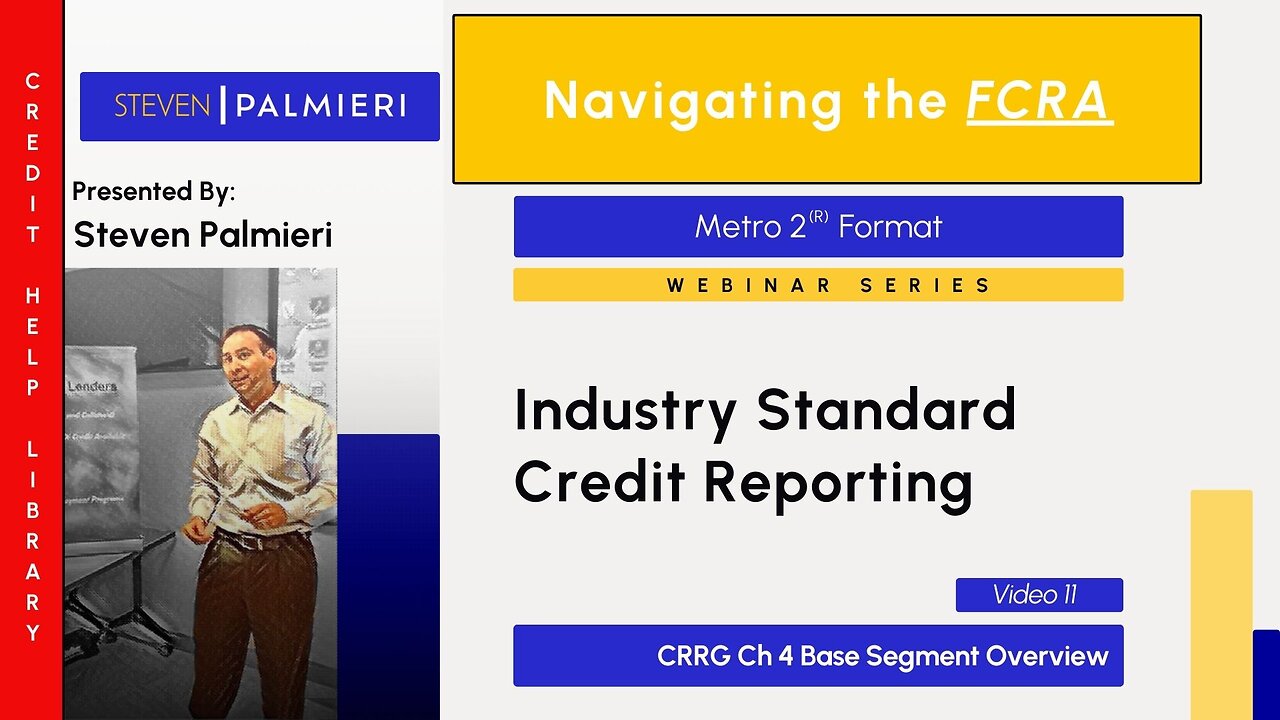Premium Only Content

Ch 4 Base Segment Overview
The video summarizes the Base Segment overview from Chapter 4 of the Metro 2 Credit Reporting Resource Guide, focusing on its data fields to help readers use the Metro 2 standard to accurately read credit reports, identify errors, and draft dispute letters to consumer reporting agencies (CRAs). Unlike earlier chapters that discussed Metro 2 conceptually—its importance, industry standard status, and legal ties—Chapter 4’s Base Segment introduces recognizable, factual details printed on credit reports daily. This segment contains data related to the primary consumer, marking the starting point for practical application.
The video highlights Field #7, the "Consumer Account Number," as an example. Metro 2 requires this to be the individual’s complete, unique account number from the furnisher’s file, though scrambling or encryption is allowed. Since all three bureaus (Equifax, Experian, TransUnion) use the same Metro 2 format for a standardized, consistent layout, any inconsistency in how this number appears across reports—despite encryption—signals a potential error. While not the strongest standalone dispute reason, it’s a legitimate basis for questioning accuracy.
You can map credit report data to Metro 2 field definitions, identify deviations (e.g., differing account numbers), and notify CRAs of errors in dispute letters—either by transcribing the data or circling issues on a report copy. The video sets up further exploration of common Base Segment fields, empowering readers to spot and challenge inaccuracies using Metro 2’s own standards.
-
 2:11:41
2:11:41
Badlands Media
10 hours agoDEFCON ZERQ Ep. 016
56.7K47 -
 2:09:24
2:09:24
Inverted World Live
5 hours agoRats Have Learned to Hunt Bats | Ep. 135
21.3K5 -
 2:48:01
2:48:01
TimcastIRL
5 hours agoLIVE Election Coverage: Polling Stations SWATTED, Bomb Threats Called In | Timcast IRL
216K163 -
 3:30:07
3:30:07
Barry Cunningham
6 hours agoBREAKING NEWS: COUNTDOWN TO COMMUNISM! ELECTION RESULTS SHOW!
39.4K36 -
 2:11:28
2:11:28
DeVory Darkins
5 hours agoLIVE NOW: 2025 Election results and Exit Polls AMA
48.5K41 -
 DVR
DVR
DLDAfterDark
4 hours ago $0.03 earnedJust Another Tuesday - In Virginia - The Governor's Race & Glock Talk
15.7K1 -
 3:21:38
3:21:38
The Charlie Kirk Show
7 hours agoJUDGMENT DAY 2025: The Election Results Stream
175K75 -
 3:51:07
3:51:07
MattMorseTV
8 hours ago $0.77 earned🔴Election Day LIVE COVERAGE.🔴
85.6K47 -
 1:16:51
1:16:51
Flyover Conservatives
1 day agoSHOCKING DATA REVEALS: Young Voters Are Done With the Old GOP - Mark Mitchell, Rasmussen Reports | FOC Show
32.7K16 -
 1:15:28
1:15:28
Sarah Westall
7 hours agoGrooming is Protected and Encouraged by the System – Michelle Peterson and Mike Adamovich
29.2K10